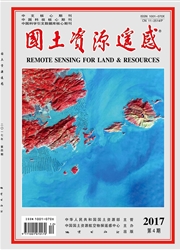

 中文摘要:
中文摘要:
为了提高北疆地区雪深时空分布监测的准确性,以该区域48个气象站点2006年12月—2007年1月的月平均雪深观测数据为基础,通过分析月均雪深空间自相关性及其与经纬度、高程的相关性,结合MODIS雪盖数据构建了多元非线性回归克里金插值方法,插值获得了北疆地区较高精度的雪深空间分布数据。将插值雪深数据与普通克里金插值法、考虑高程为辅助变量的协同克里金插值法的预测结果进行比较,结果表明:1相对普通克里金和协同克里金方法,多元非线性回归克里金法的12月份雪深预测精度分别提高了15.14%和9.54%,1月份的提高了4.8%和6.7%;2由于充分利用了经纬度和地形信息,多元非线性回归克里金法的雪深预测结果可提供更多细节信息;3预测结果客观地表达了雪深随经纬度和地形变化的趋势,反映了积雪深度的空间变异性;4基于不显著相关的协变量高程的协同克里金插值法预测的雪深数据精度劣于普通克里金插值法的预测结果。
 英文摘要:
英文摘要:
To accurately map the spatial - temporal variability of snow depth in Northern Xinjiang, the authors analyzed the spatial autocorrelation of monthly mean snow depths of 48 meteorological stations from December 2006 to January 2007, and investigated the relationship between snow depth, longitude, latitude and elevation. A multivariate nonlinear regression Kriging (MNRK) model based on the MODIS snow cover data is proposed to predict the spatial patterns of monthly mean snow depth. Relative to the ordinary Kriging (OK) and CoKriging with elevation (CoK) as covariate, the relative root mean square error(RRMSE) of predicted snow depth decreased by 15.14% and 9.54% in December, and decreased by 4.8% and 6.7% in January. The comparative results show that the MNRK method outperforms the other two MNRK method is more efficient in capturing more methods. Integrating more information related to snow depth, the spatial details of snow depth which varies with longitude, latitude and elevation. The CoK method without significantly correlated covariate produces worse results than the OK method.
 同期刊论文项目
同期刊论文项目
 同项目期刊论文
同项目期刊论文
 An Improved Coarse-grained Parallel Algorithm for Computational Acceleration of Ordinary Kriging Int
An Improved Coarse-grained Parallel Algorithm for Computational Acceleration of Ordinary Kriging Int 期刊信息
期刊信息
